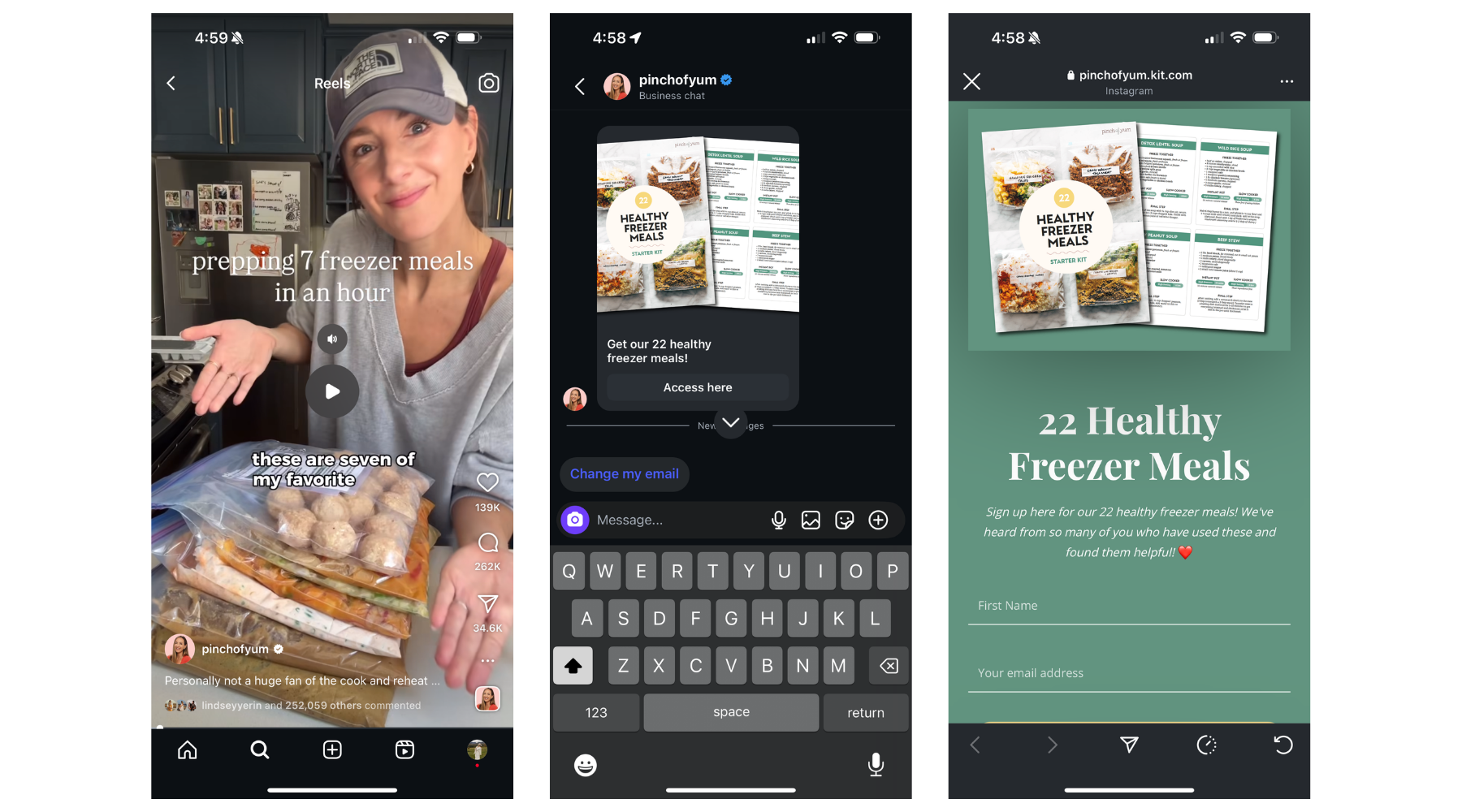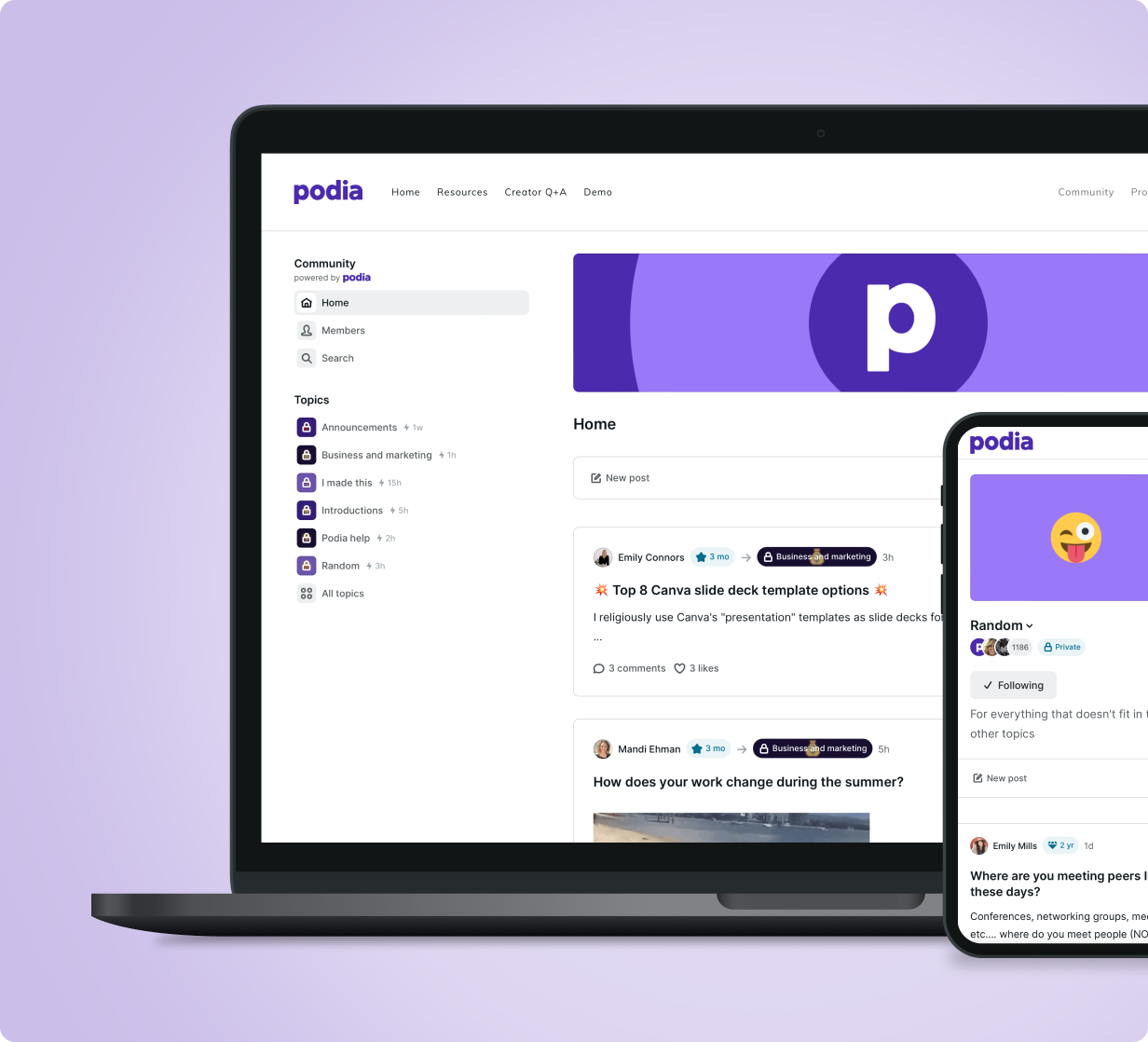5 Best Substack Alternatives for Food Bloggers & Recipe Creators
If you’ve ever tried to fit a three-course meal into a to-go box, you already know what it’s like trying to run a food membership on Substack.
Don’t get me wrong, Substack has done wonders for writers and journalists looking to take their audience independent. But for food bloggers, recipe developers, and creators who make their living through ingredients, visuals, and meal plans… it’s a bit like trying to bake croissants in a toaster oven.
Your audience doesn’t just want to read your recipes, they want to use them. They want to save, shop, and share. That means your membership platform needs to go far beyond text.
If you’re ready to move beyond Substack and build a true membership experience around your recipes, here are five top alternatives to consider.
1. Grocers List
Grocers List is the only Recipe Marketing Platform built exclusively for food bloggers, chefs, and recipe creators who are tired of stitching together generic tools that weren’t designed for the kitchen.
Instead of repurposing a newsletter platform, Grocers List gives you a membership-ready ecosystem where recipes, email lists, and affiliate sales all work together in one place. Think of it as your digital test kitchen, but automated, beautiful, and profitable.
Why Food Creators Love It
Built for memberships on your own site.
With Grocers List’s Paid Memberships tool, you can launch a subscription layer directly on your WordPress blog, no developers needed.
Offer an ad-free experience, unlock premium recipes, and gate content for members in minutes. You keep 100% of your data and get paid via Stripe (yes, even with Apple Pay).
Integrates with your full creator stack.
Grocers List seamlessly syncs with Kit (formerly ConvertKit) and Flodesk, so you can set up member email flows for new subscribers, trials, and cancellations.
And the paid memberships product is integrated with Raptive, Mediavine and Chicory Ads out of the box. So you don’t have to lift a finger to remove ads for members.
Turn casual followers into paying members.
The real magic comes from Grocers List’s growth tools:
Comment for Recipe — turns Instagram comments into DMs that deliver clickable recipe cards and collect emails.
Save to Email — lets followers save your recipes straight to their inbox and join your list automatically.
Shop the Recipe — transforms your recipes into shoppable Instacart lists, earning affiliate revenue every time someone adds ingredients to their cart.
Amazon App Links (premium add-on) — sends affiliate clicks directly to the Amazon app, not a cold browser window.
You own it all.
Unlike Substack, which requires you promote your audience to move into Substack, Grocers List memberships live on your domain. You keep your subscribers, your branding, and your revenue.
Pricing
No monthly subscription. Simply 15% of sales (this includes credit card fees).
Best for
Food creators ready to build sustainable, owned memberships that grow revenue, traffic, and email lists, not just clicks.
2. Kit
Kit is a creator-focused email marketing platform with strong automation and monetization features. It’s a great step up from Substack if you want advanced segmentation and don’t mind handling your own site or landing pages.
Why It Works for Creators
Kit lets you sell paid newsletters, digital products, and memberships directly through Stripe, all while automating workflows like “welcome” sequences or product promotions. It’s especially handy if you’re juggling newsletters and online courses.
Where It Falls Short
While powerful, Kit doesn’t include the “recipe-friendly” experiences (like step-by-step modes, shoppable lists, or comment-based automations) that make food memberships sticky and fun. You’ll need to piece together multiple tools, something Grocers List handles for you out of the box.
Pricing
Free up to 10,000 subscribers; paid plans start at $33/month.
Best for
Experienced newsletter creators who want deep automation control but are fine building the rest of the experience manually.
3. Ghost
Ghost is like Substack’s older, more sophisticated sibling. It gives you full control over your design, branding, and monetization. You can host it yourself or use Ghost (Pro), and it integrates Stripe for paid subscriptions.
Why It Works for Creators
Ghost lets you customize everything (from fonts and colors to full website layouts) so your publication feels like yours, not Ghost’s. You can host your newsletter and blog together, offering free and paid tiers.
Where It Falls Short
While Ghost supports paid memberships, it doesn’t have recipe-specific features like shopping lists, affiliate tools, or email list automations tailored for food content. It’s fantastic for storytelling and writing, but it won’t turn your recipes into sales or subscribers by itself.
Pricing
Starts at $15/month (0% transaction fee).
Best for
Writers and food essayists who want creative control and don’t mind tinkering under the hood.
4. Podia
Podia is an all-in-one platform for creators who want to sell memberships, digital products, and courses without juggling multiple logins.
Why It Works for Creators
If your membership includes premium video tutorials, cookbooks, or virtual classes, Podia is a convenient hub. You can create gated content areas, email your members, and track payments all in one dashboard.
Where It Falls Short
Podia isn’t built for recipe workflows or affiliate sales. You’ll need to manually manage links, ingredient lists, and conversions. Again, the kind of heavy lifting Grocers List automates with one click.
Pricing
From $39/month + 5% transaction fee on lower tiers.
Best for
Food educators who want to bundle their recipes with online classes or workshops.
5. Patreon
Patreon practically invented the creator membership model. You can create paid tiers, offer exclusive recipes, and even host video tutorials or behind-the-scenes kitchen content.
Why It Works for Creators
It’s easy to set up and familiar to fans. You can reward members with early access, exclusive posts, or downloadable PDFs. Some food creators use Patreon as a side membership channel, promoting it from their Instagram or YouTube.
Where It Falls Short
Patreon isn’t designed for newsletters or recipes. Formatting posts is clunky, email communication is limited, and all content lives on Patreon’s platform, not yours. That means you don’t fully own your audience or your design.
Pricing
Free to start, but Patreon takes 5–12% in fees.
Best for
Creators who value community over customization and are okay living within Patreon’s ecosystem.
The Verdict: Choose a Platform That Feeds Your Growth
Substack is great if your content lives in words. But for food creators, the magic happens in actions, like saving recipes, buying ingredients, and coming back for seconds.
That’s where Grocers List shines. It gives you a real membership platform purpose-built for your craft:
Grow your list automatically with DMs and “Save to Email” opt-ins
Drive affiliate revenue with “Shop the Recipe” and Amazon deep links
Gate content on your WordPress site with ad-free memberships
Own your audience and your brand, end to end
So while Substack sets the table, Grocers List makes sure the kitchen is stocked, the oven’s preheated, and the guests keep coming back for more!






